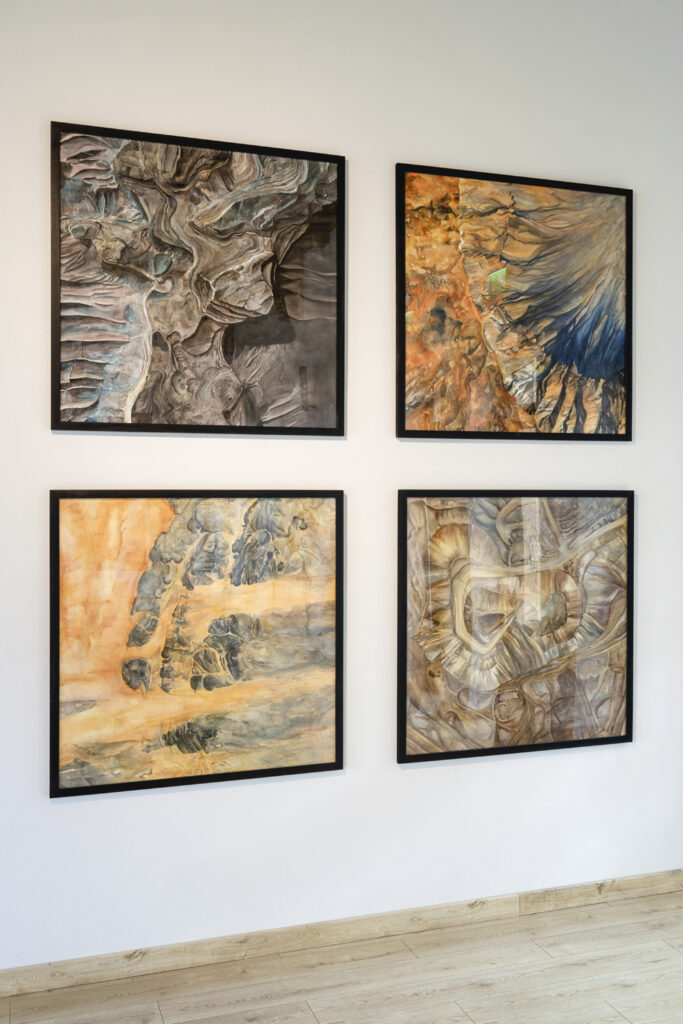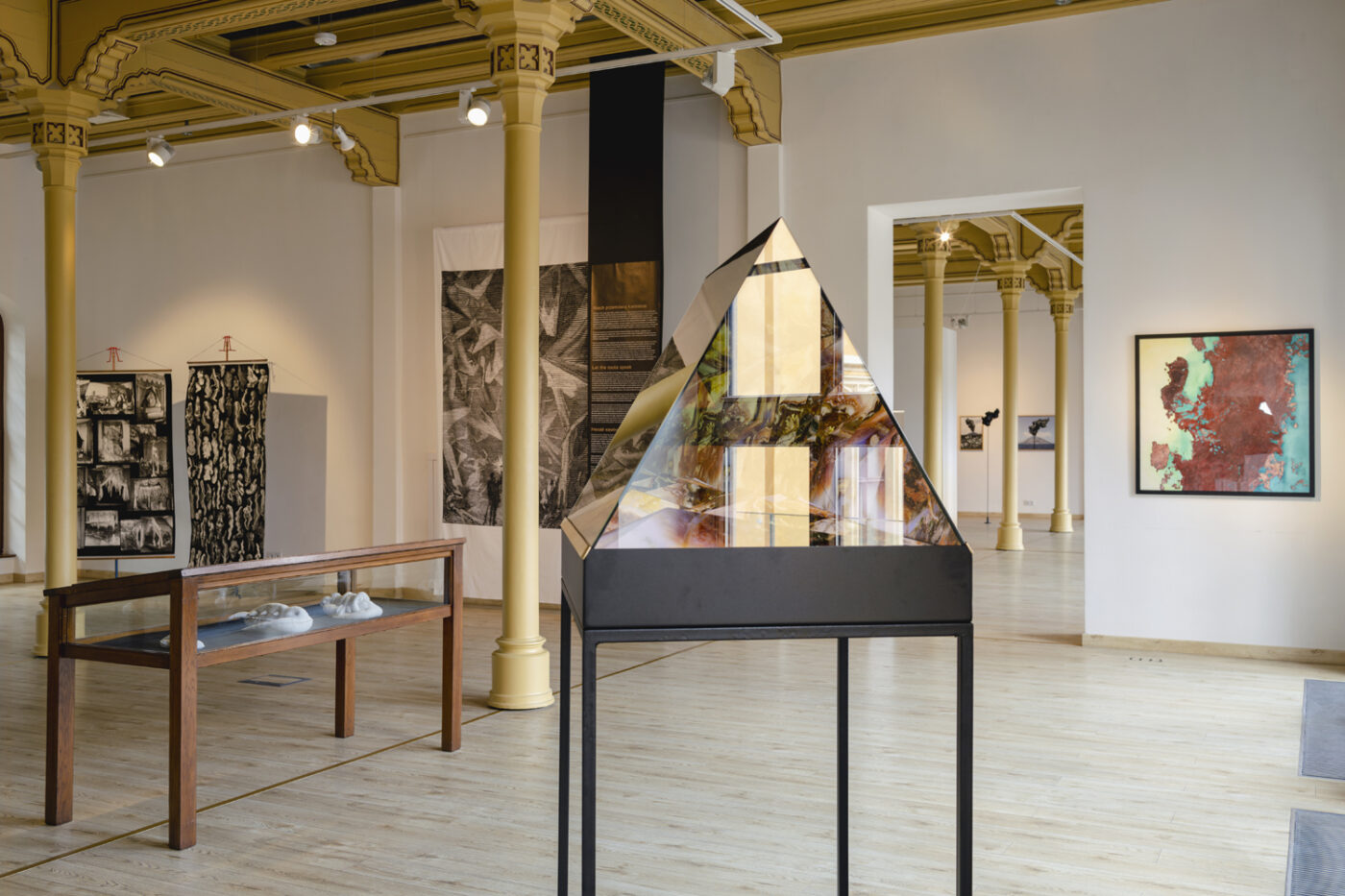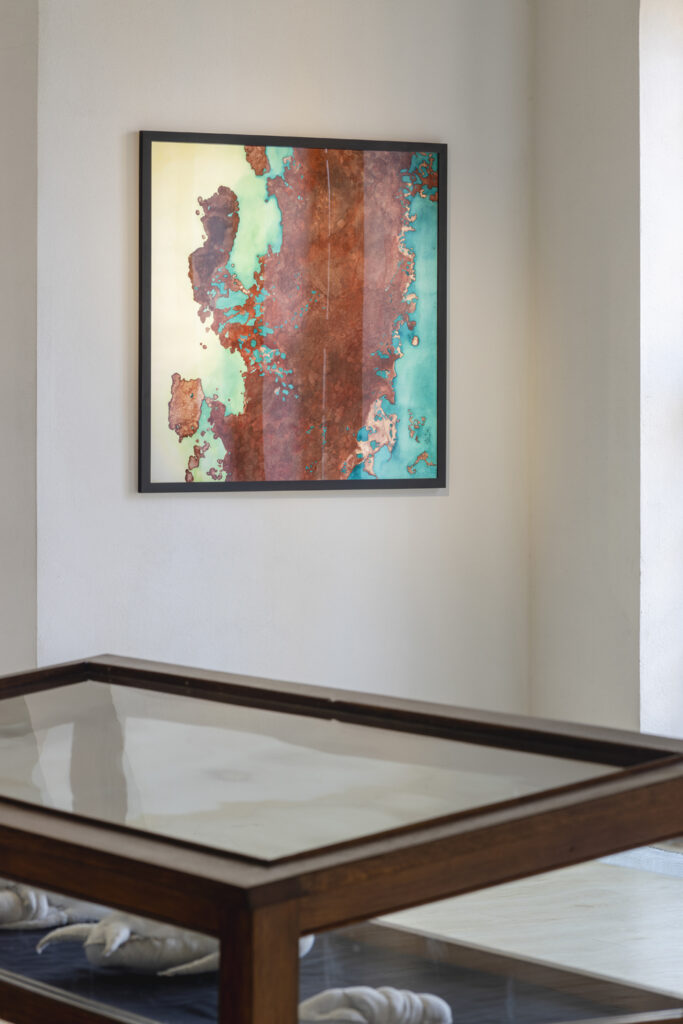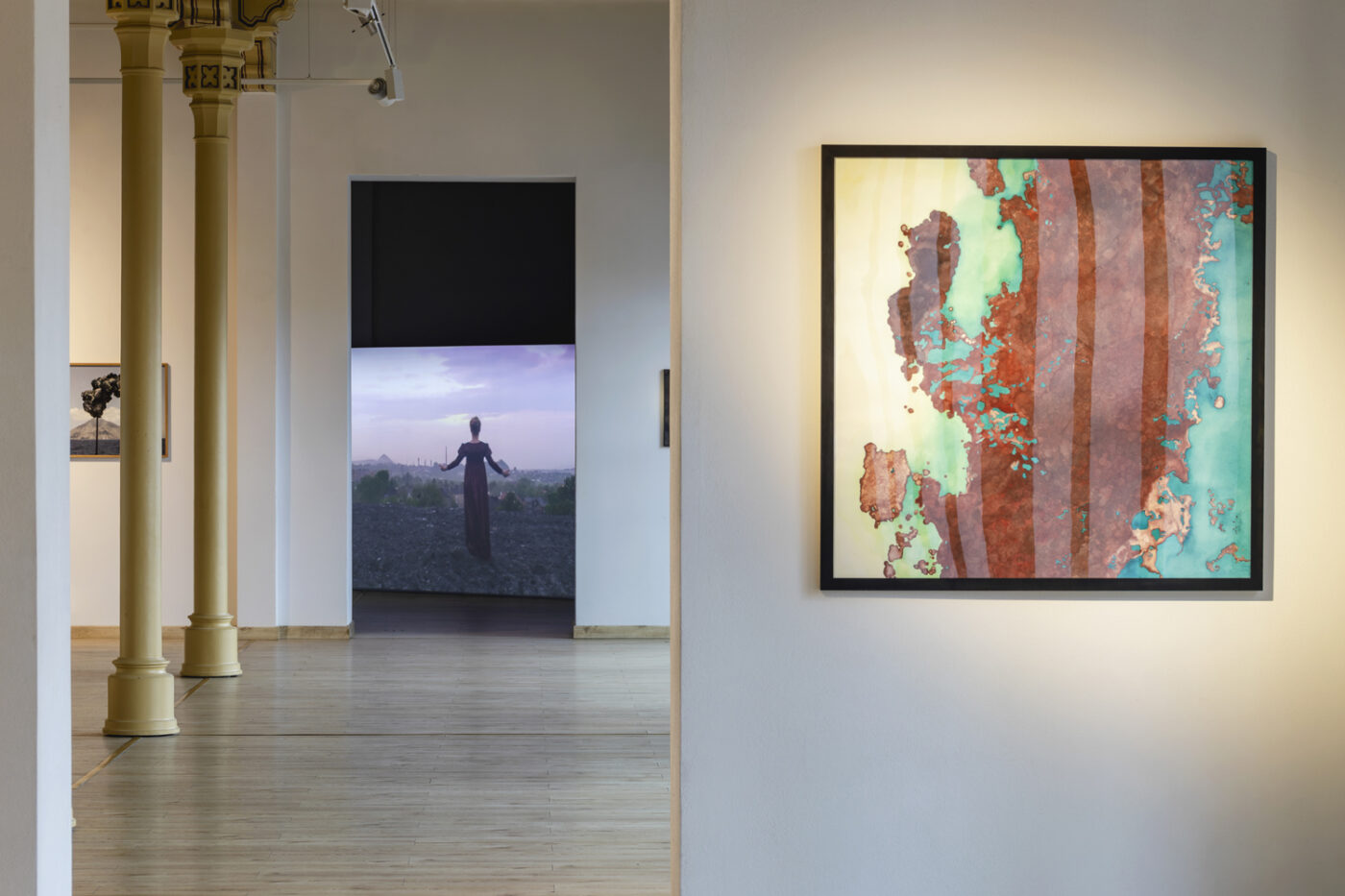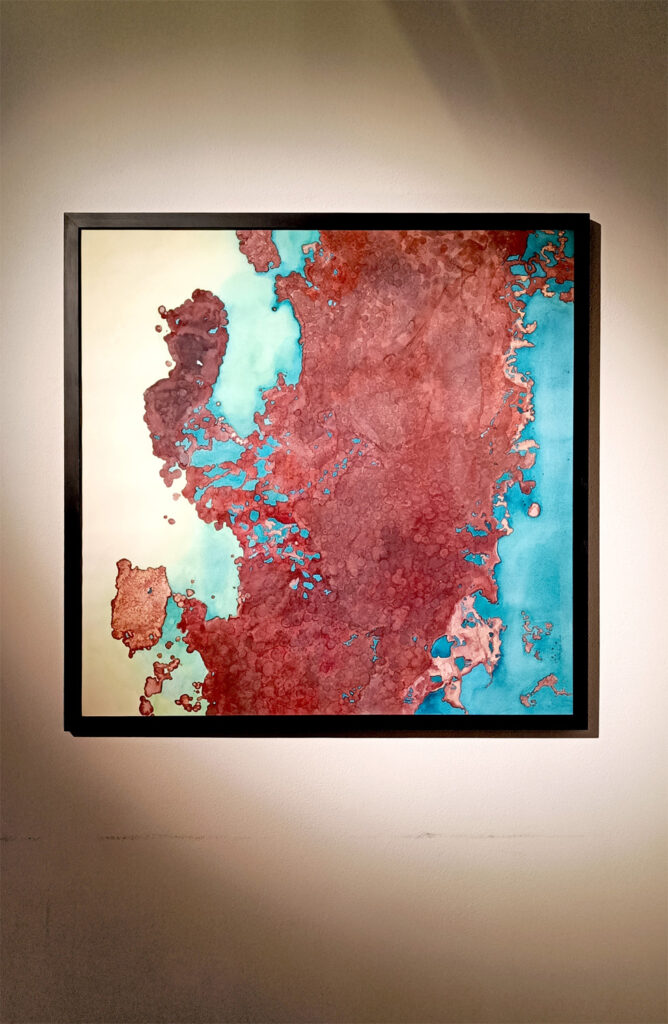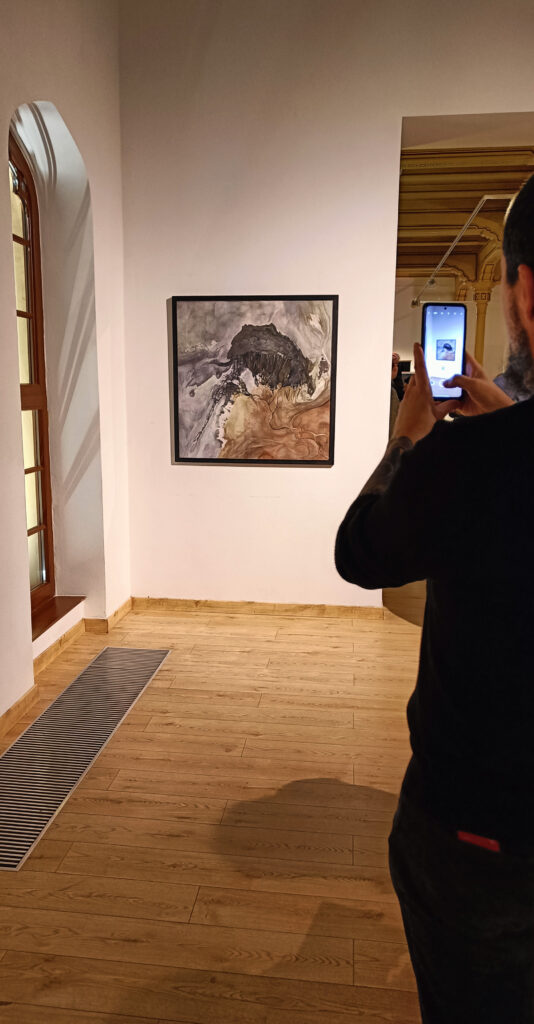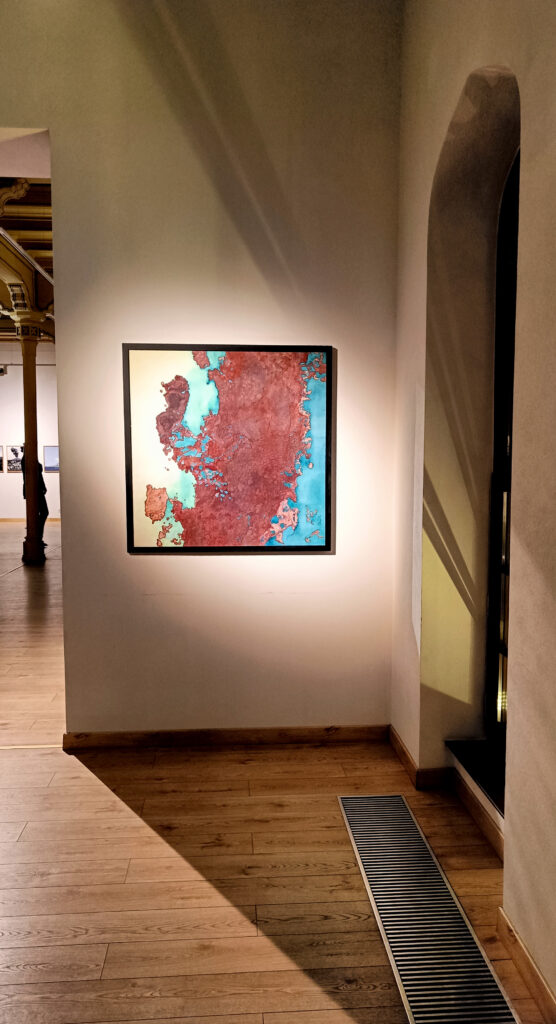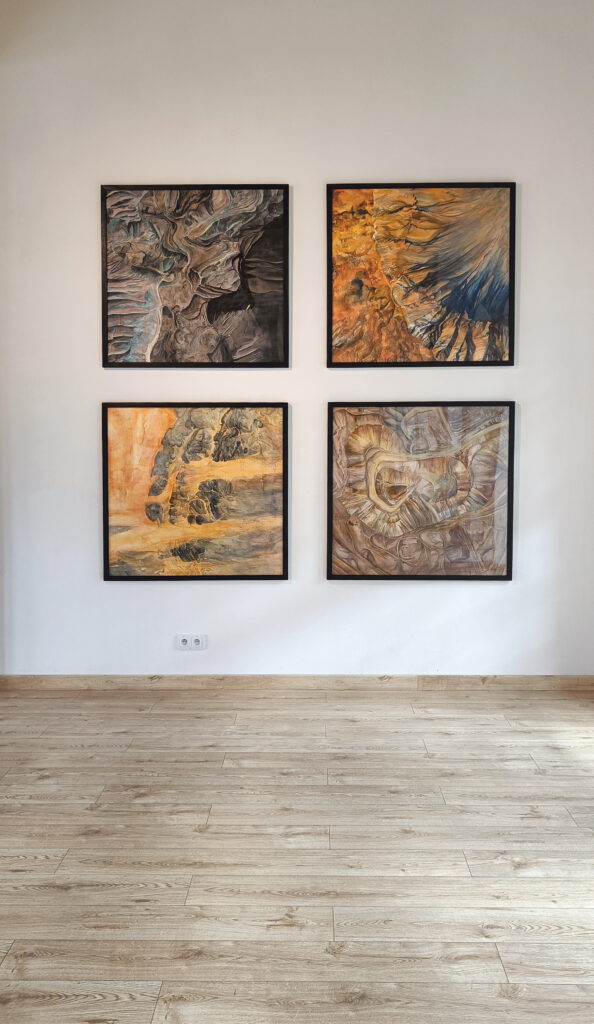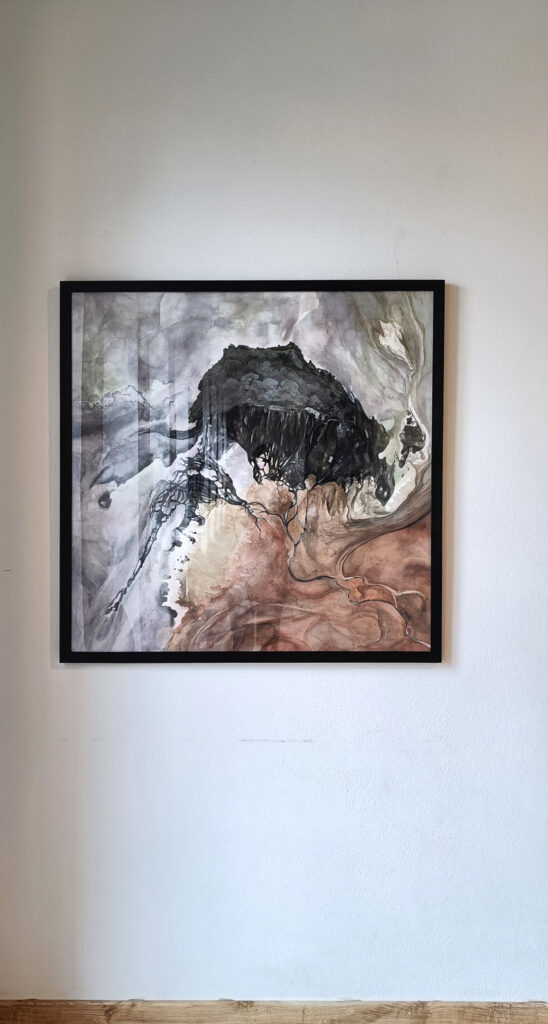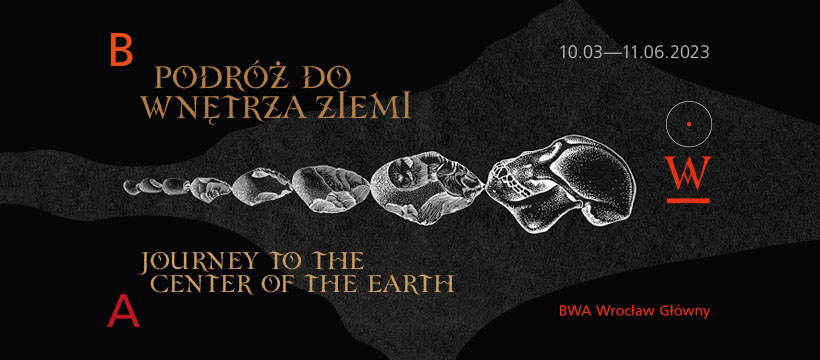
Journey to the Center of the Earth
Artists: Kateryna Aliinyk, Kuba Bąkowski, Piotr Blajerski, Agnieszka Brzeżańska, Lia Dostlieva, Maria Gostylla, Nicolas Grospierre, Agnieszka Kalinowska, Michał Łuczak, Patrycja Orzechowska, Laura Pawela, Michał Smandek, Łukasz Surowiec, Marta Szulc, Stach Szumski & Nestor Peixoto Aballe (Insane Temple), Bartosz Zalewski
Curator: Joanna Kobyłt
Joanna Kobyłt about the New Earth series in the context of the exhibition:
Representations of Earth as seen from space, alternated with images of Mars. Abstract organic forms make it impossible to tell which planet we are looking at. The series refers to the contemporary visions of leaving our home planet and colonising space. Besides a potential rescue from ecological disaster, the expansion is primarily aimed at acquiring new mining grounds. Theseseemingly fanciful fantasies of planetary conquest are supported by very real measures, such as newly issued legislation on the extraction of extraterrestrial raw materials, or establishing companies, such as the US-based Planetary Resources, dedicated to detecting asteroids in the Solar System and extracting raw materials from them.
The motif of outer space only seemingly appears unrelated to the book Journey to the Center of the Earth. The expedition, of course, heads in the opposite direction — towards what, as we would say today, has already been completely conquered. Thoughts about the universe never
leave Axel, who fears descending into the subterranean depths and has a (somewhat prophetic) nightmare about being cast out intointerplanetary space by an erupting volcano. In contrast, Professor Lidenbrock is chiefly motivated by the supposed pursuit of science; his expedition is primarily research-based. However, what also emerges is the explicitly articulated desire to reach a place where no man has ever been before (except for the legendary Arne Saknussemm). In fact, the Professor refers to himself as “the Columbus of this nether world.” After the successful quest, Lidenbrock and Axel, and even Hans, the guide hired for money, earn social prestige. We don’t learn how this expedition has contributed to science, but we do know that the centre of the Earth has been reached.
[a fragment of the text for the exhibition folder]
Joanna Kobyłt o serii Nowa Ziemia w kontekście wystawy:
To obrazy Ziemi widzianej z kosmosu, przeplecione widokami Marsa. Abstrakcyjne organiczne formy uniemożliwiają rozpoznanie, na którą z planet patrzymy. Cykl odnosi się do snutych obecnie wizji opuszczenia rodzimegoziemskiego globu i kolonizacji kosmosu. Ekspansja oprócz ewentualnego ratunku przed katastrofą ekologiczną ma na celu przede wszystkim pozyskanie nowych terenów wydobywczych.Za tymi pozornymi fantazjami o podboju planetarnym stoją całkiem realne działania, jak choćby powstające regulacje prawne dotyczące wydobywania pozaziemskich surowców czy powstające firmy, na przykład amerykańska Planetary Resources, której celem jest wykrywanie asteroid obecnych w Układzie Słonecznym, a następnie wydobywanie z nich surowców .
Motyw kosmiczny tylko pozornie nie dotyczy książki Podróż do wnętrza Ziemi . Oczywiście ekspedycja odbywa się w przeciwnym kierunku — tym, który, jak dziś byśmy to powiedzieli, został już całkowicie zdobyty . Świadomość wszechświata nie opuszcza Aksela, który przeżywa lęk przed zejściem do podziemnych czeluści i śni koszmar (poniekąd proroczy) o byciu wyrzuconym w przestrzeń międzyplanetarną przez wybuchający wulkan. Z kolei główną motywacją profesora Lidenbrocka jest rzekomy rozwój nauki, jego ekspedycja ma przede wszystkim wymiar badawczy. Pojawia się jednak także wyartykułowana wprost potrzeba dotarcia do miejsca, w którym nie było jeszcze żadnego człowieka przed nim (poza legendarnym Arne Saknussemmem). Sam profesor nazywa się „Kolumbem podziemnych krain”. Po zakończonej sukcesem wyprawie Lidenbrock i Aksel, a nawet wynajęty za pieniądze przewodnik Hans, zyskują społeczny prestiż. Nie dowiadujemy się, jak ekspedycja ta przyczyniła się do rozwoju nauki, ale wiemy, że zdobyty został środek wnętrza Ziemi.
[fragment tekstu do folderu z wystawy]
